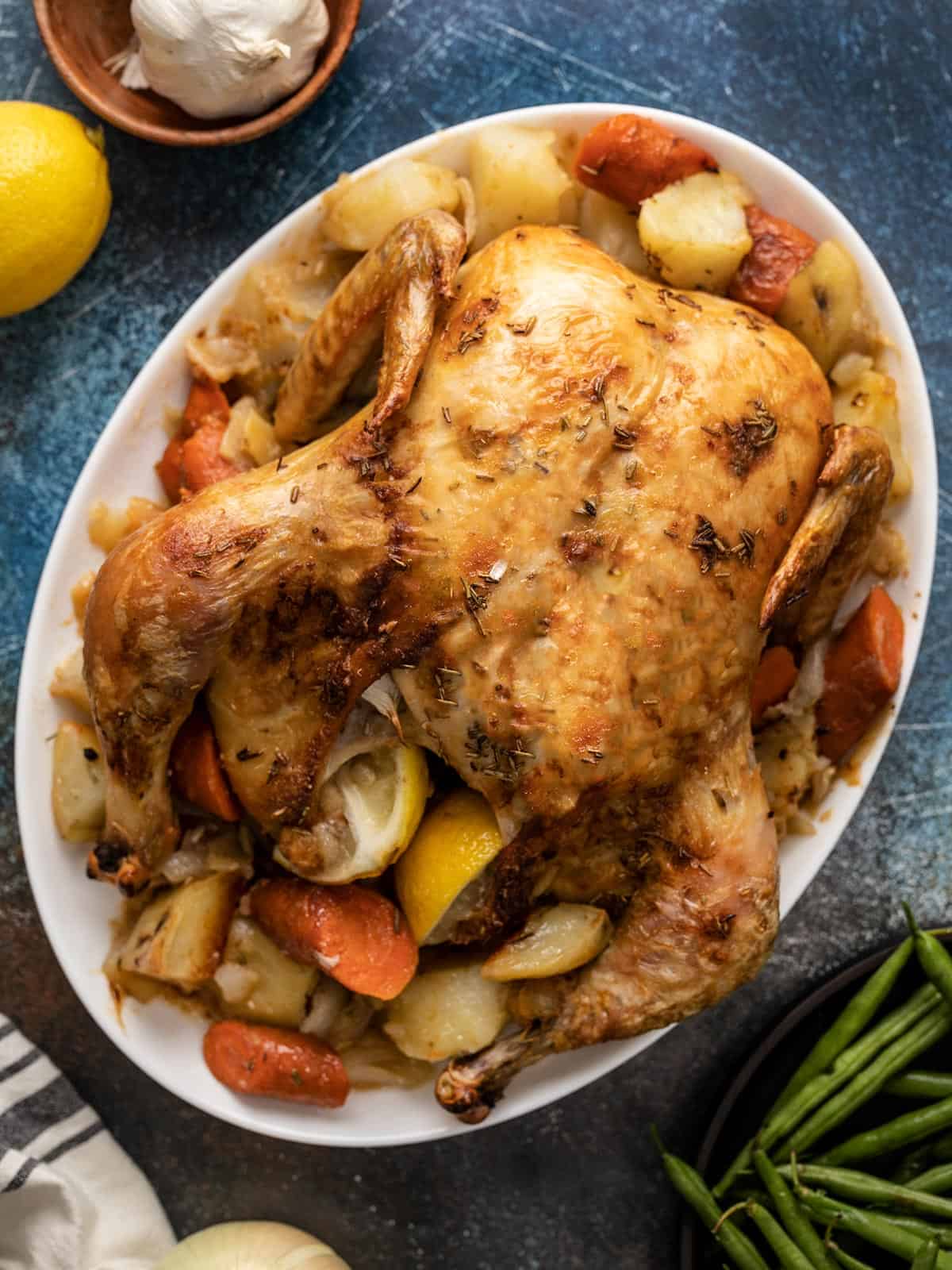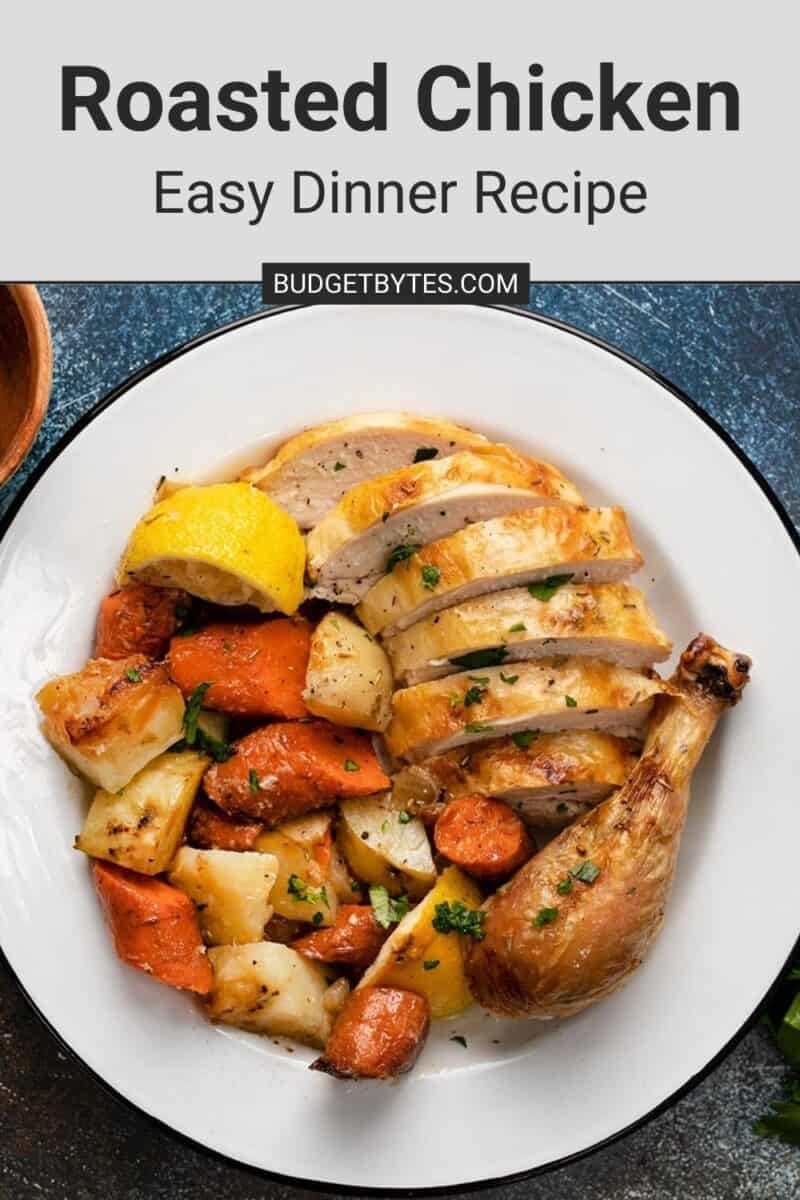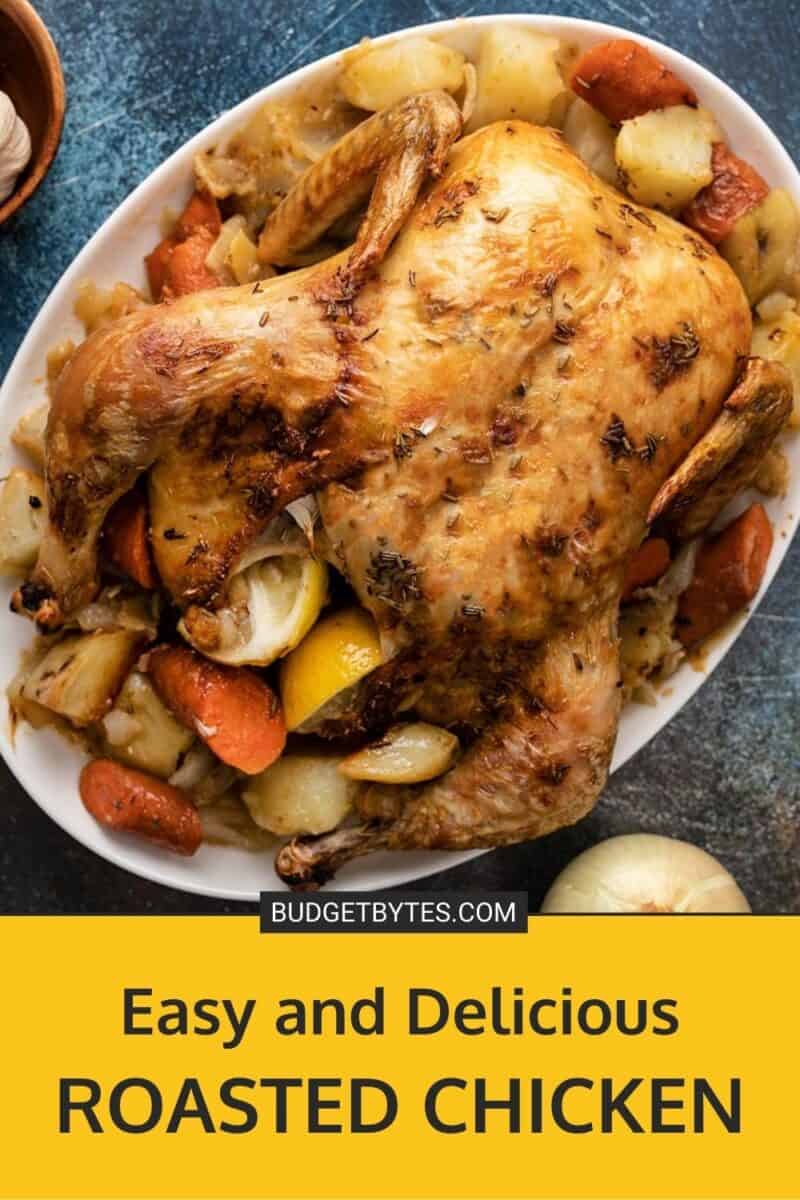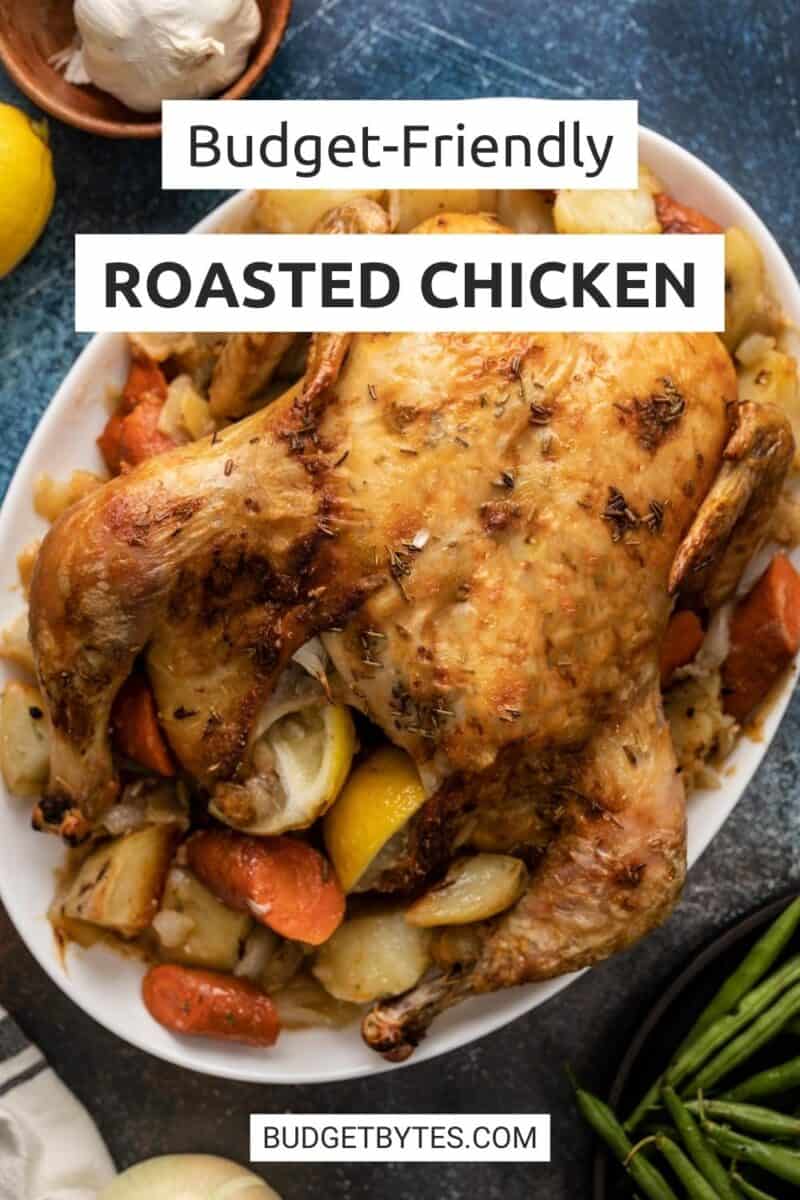Roasted Chicken – Budget Bytes

There’s nothing quite like this roasted chicken recipe. It gives you crispy skin bathed in butter and meat softly scented with lemon, garlic, and rosemary. There are unctuous potatoes and carrots that cook in chicken jus. It perfumes your entire household. And you can transform a single bird into meals that last for days on end. It truly is perfection.
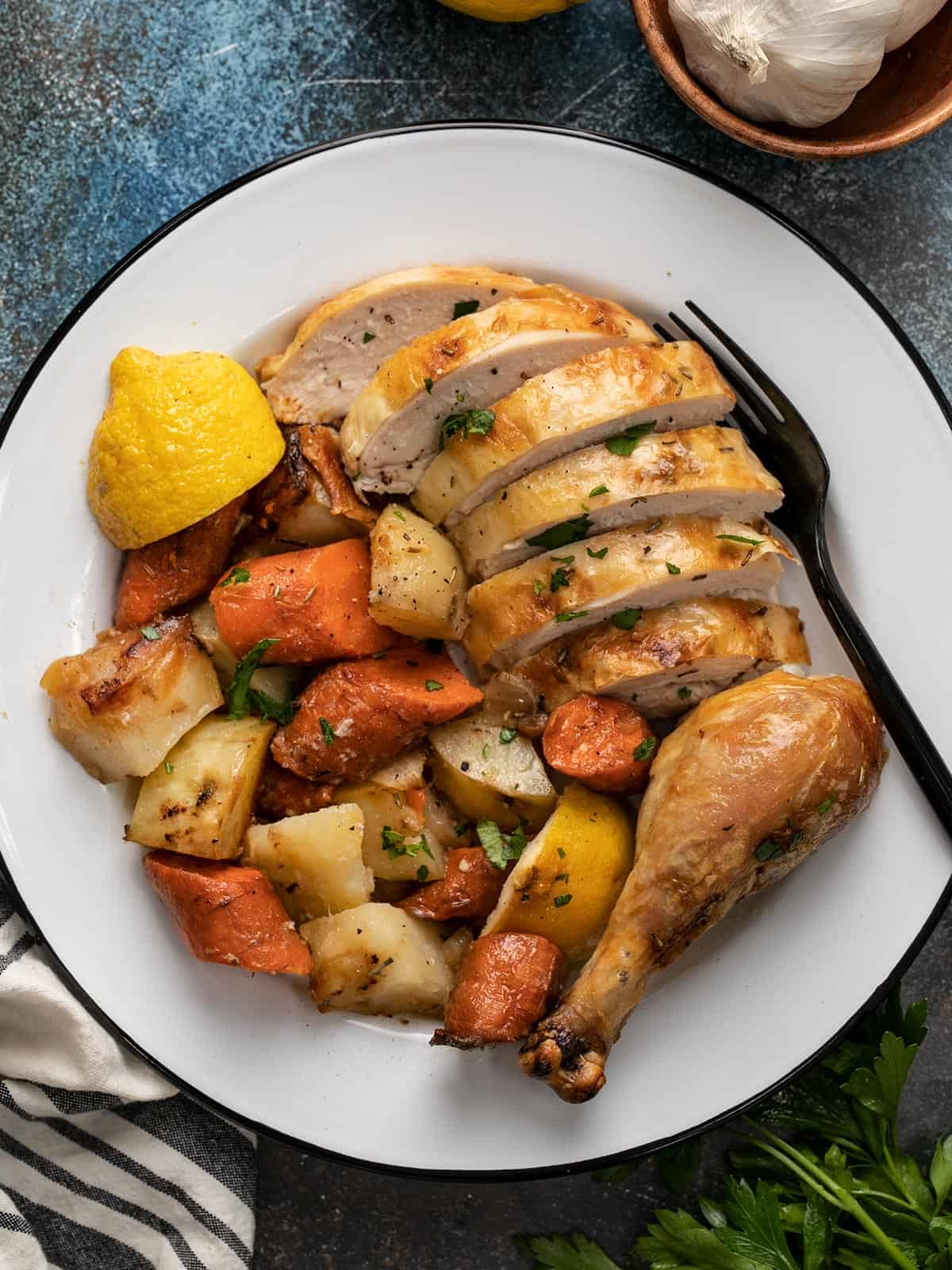
How To Perfectly Roast Chicken
For the uninitiated, roasting a whole chicken can be intimidating. But it’s easier than you think. You just need to know a few tricks, and luckily you’ve got a friend that has them all up her sleeve. Ahem. It all comes down to is drying your chicken, using salt correctly, introducing fat to keep the breast meat moist, and using the cavity as a vehicle for flavor.
To make the best roasted chicken, use these four tricks:
- Dry your chicken well for extra crispy skin
- Use a dry brine to keep meat tender and infuse flavor
- Coat with herb butter for a deliciously golden brown crispy skin
- Stuff the cavity with aromatics to make every bite flavorful
Why Should I Dry Chicken?
The first trick to perfectly roasting a chicken is thoroughly drying your bird. I know it sounds counterintuitive. Why would you take juices off a chicken you want to be juicy? Because it gives you the crispiest skin ever. It’s so crucial that some chefs go as far as drying their chicken with a hair dryer. You don’t have to go that far, but don’t skip this step. It sets you up beautifully for a dry brine.
What Is A Dry Brine?
Dry brining is the act of salting chicken (or any other meat) and letting it sit uncovered while the salt draws out the juices. The chicken then reabsorbs the now salted juices, which tenderize the meat and add deep flavors all the way to the bone. This is far superior to just salting the skin on the outside, which leaves you with a bland bird. You can dry brine for as little as an hour, but if you want real magic, dry brine your chicken overnight. Leave it uncovered in your fridge, on the bottom shelf, for at least 8 hours. Then it’s ready for a butter bath.
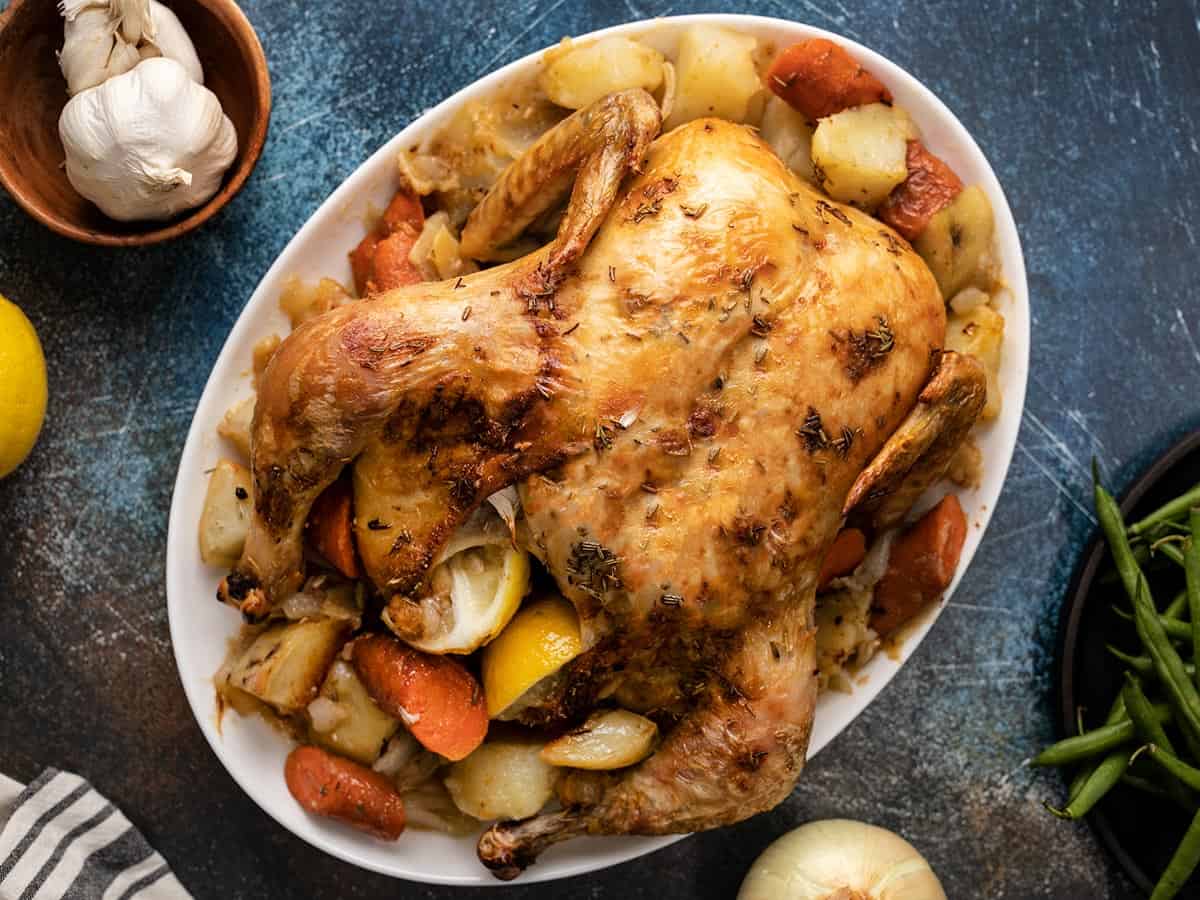
Why Do People Put Butter On Their Chicken?
You add fat to the chicken breast to keep it moist and then you spread it on the skin to crisp it. The best and tastiest way to do that is to rub your chicken down with softened butter. (Unless you save your bacon fat, in which case, you should definitely use that!). As the butter melts, it bastes the notoriously dry breast meat, which keeps it juicy while adding a huge wallop of flavor. It will also give you deeply golden, crispy skin. Now all you have to do is to level up your flavor game by stuffing the chicken cavity with aromatics.
Why Should I Stuff Chicken?
Leaving the chicken’s cavity empty is a missed opportunity to add flavor. Stuff the cavity with aromatics, like garlic and lemon. If you have fresh rosemary, put a sprig in there as well. (If you don’t, that’s OK. You can add dried rosemary to your butter.) As the chicken cooks, the garlic, lemon, and rosemary release their essences and perfume your entire bird, from the inside out. It will take your chicken over the top, which is exactly where you want it.
Your chicken is done cooking when a thermometer inserted into the breast reads 160°F. Make sure not to touch the bone, which skews the results. You also need to insert the thermometer into the thickest part of the thigh (again without touching the bone), where it should read 170°F. This is about 50 to 60 minutes for a five-pound bird at 425°F.
Remember the magic of carry-over cooking. The chicken will continue to rise at least five to ten degrees in temperature when it is out of the oven. Taking it out when the breast reads 160°F and the thigh reads 170°F will get you to the perfect temperature for chicken: 165°F to 170°F for the breast and 175°F to 180°F for the thighs. Leaving it any longer will leave you with a well done bird, which might work for the dark meat, but the white meat will be sawdust.
If you don’t have a thermometer, cut into the joint between the thigh and the body. If the juices run clear, you are good to go. If they run red or pinkish, pop your chicken back in the oven for a few more minutes.
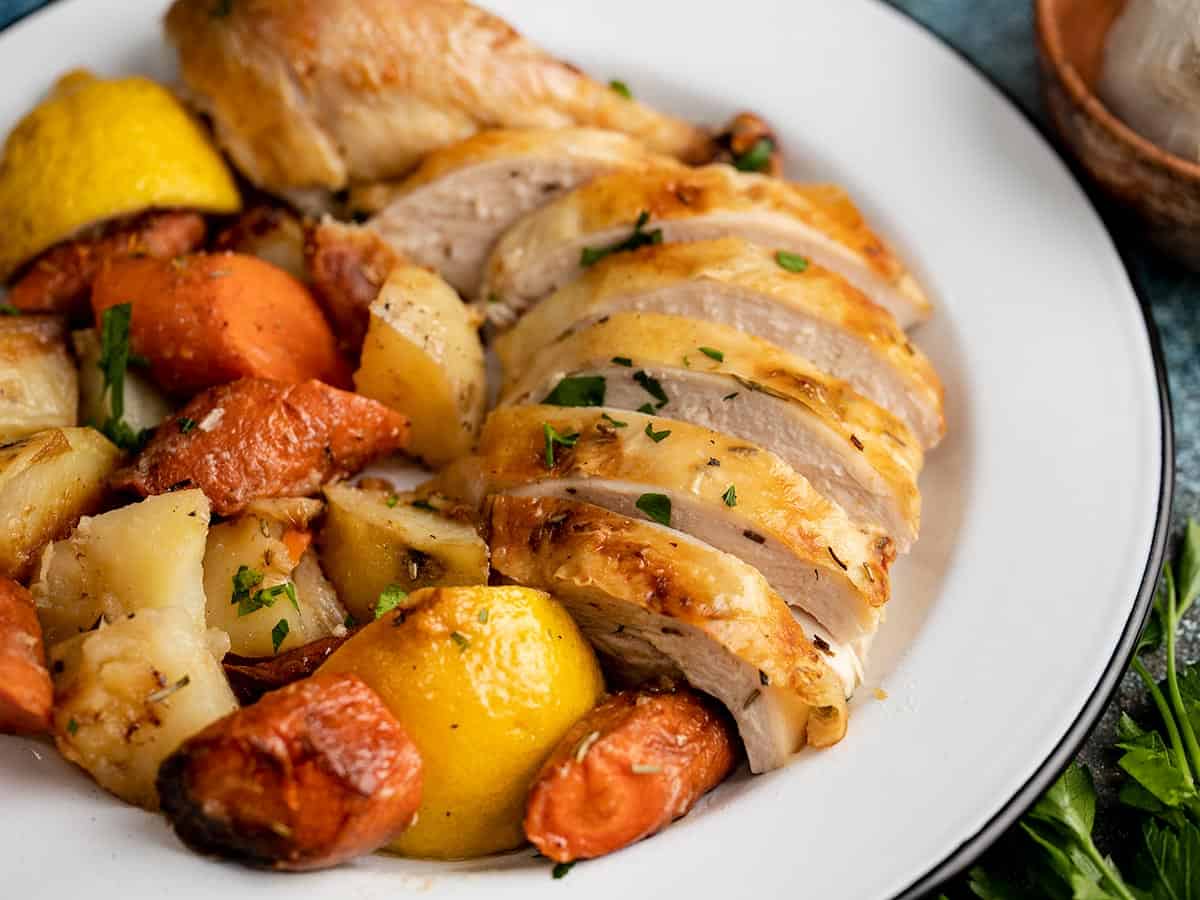
Should I Baste Chicken?
I know, I know. Every time you see someone cooking chicken on a TV show or commercial, there’s always a scene where they have the oven door wide open as they gingerly baste their chicken in its juices. Don’t believe the hype. (Said in my best Flavor Flav.) You don’t have to baste chicken to get juicy results. That’s what the dry brine was for—leaving the oven door open to baste lets all of the heat escape and ruins the roast.
How To Roast A Chicken Without A Roasting Pan
A roasting pan with a rack is ideal because you want enough space between the vegetables and the chicken for air to circulate around the chicken, to crisp it and cook it evenly. If you don’t own a roasting pan, you have loads of other choices. Use a cast iron skillet and nestle the bird on top of the veg. The skin on the back won’t be crispy, but it will still be delicious. In fact, you can roast in almost any low-walled oven-safe dish. For example, use a pie pan or a brownie tin. All that matters is that the sides of the pan don’t block the sides of the chicken. They need to be exposed to develop color and get crispy.
Don’t Waste The Drippings
You’ve now set the foundation for a perfectly roasted bird. But why stop there? As that chicken roasts and that butter melts, all of the drippings fall to the bottom of the pan. This is precisely why you fill the pan with carrots, onions, and potatoes. They soak up all that incredible juice and transform into intensely flavored, unctious bites.
That’s it! With those simple tricks, you will have created intensely flavorful bites with perfectly crispy skin every time. And you can keep enjoying that chicken for days. Pull any leftover meat and use it in casseroles, burritos, or soups. Simmer the bones and create chicken stock. Or eat it cold out of the container as you cry uncontrollably while watching the last episode of From Scratch on Netflix. (Have you seen it?!?!?! We. Must. Discuss.)
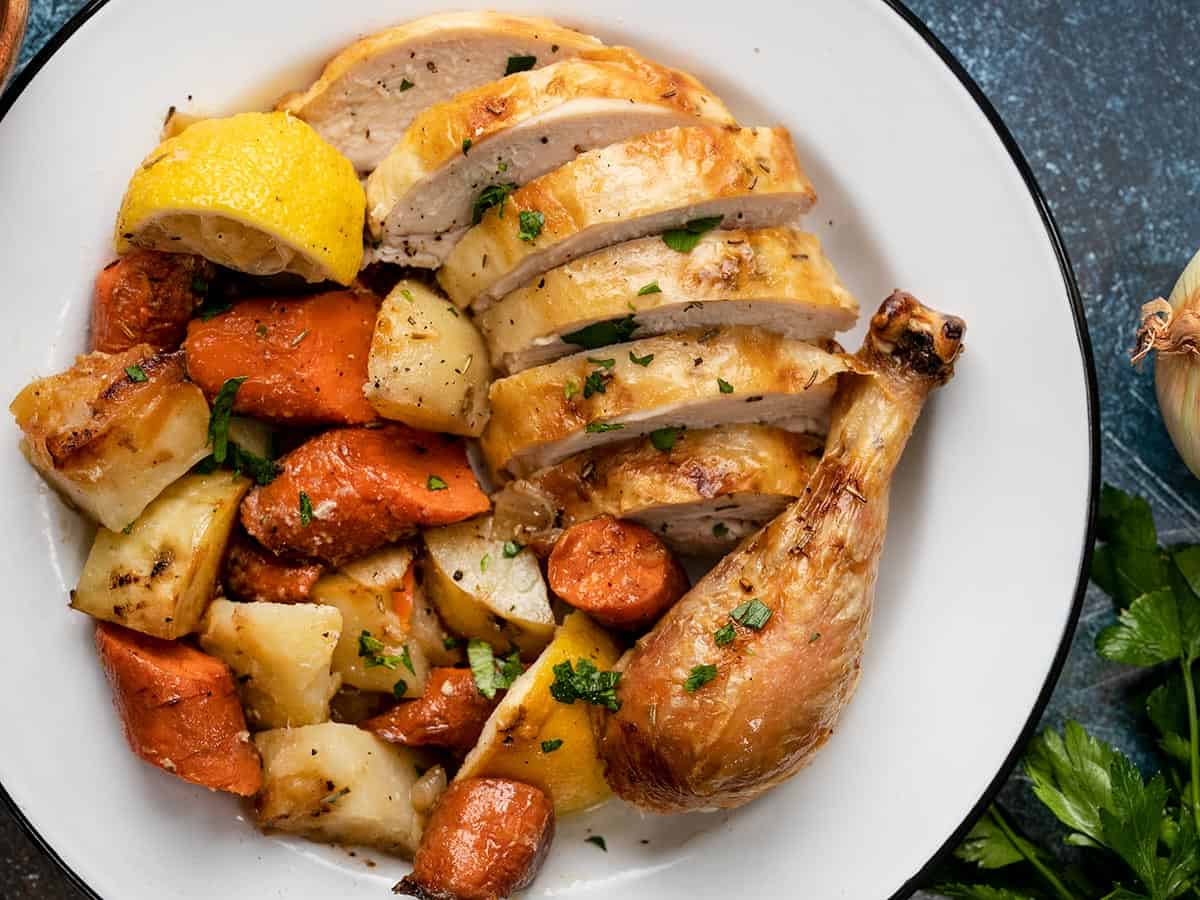
Roasted Chicken
This roasted chicken recipe gives you crispy skin bathed in butter and meat that’s softly scented with lemon, garlic, and rosemary. There are also unctuous potatoes and carrots that cook in chicken jus. It’s a must try!
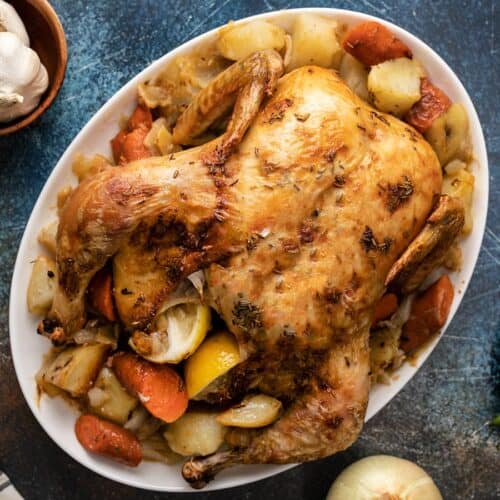
- 1 whole chicken, 5 lbs ($6.62)
- 5 tsp kosher salt or coarse sea salt ($0.20)
- 8 Tbsp salted butter, softened ($1.20)
- 1 Tbsp dry rosemary ($0.30)
- 2 russet potatoes ($0.98)
- 1 onion ($0.49)
- 3 carrots ($0.75)
- 1 lemon ($0.51)
- 1 head of garlic ($0.40)
-
Place a rack in the center of your oven and preheat it to 425°F. Remove the chicken from its packaging.
-
Remove the innards.
-
Dry the chicken thoroughly inside and out with paper towels.
-
Dry brine the chicken by rubbing salt on it, inside and out. Use 1 teaspoon of kosher salt or coarse sea salt per pound of meat. Or 1/2 teaspoon of fine sea salt or iodized salt per pound of meat. Let it rest uncovered in your fridge for at least an hour but preferably overnight.
-
Chop the vegetables. Quarter an onion, slice the carrots, and quarter the potatoes. Add them to a roasting pan.
-
Add the dried rosemary to the softened butter and mix thoroughly.
-
Place the chicken on a rack over the vegetables and pat it dry again. Cover the chicken inside and out with butter. Work your way under the skin on the breast and add butter there too.
-
Quarter a lemon and slice through the top of a bulb of garlic.
-
Add the garlic and the lemon into the cavity of the chicken.
-
Roast your chicken at 425°F until a meat thermometer inserted into the breast reads 160°F and inserted into the thigh it reads 170°F. Remove the chicken from the pan and place it on a serving platter. Let it rest for at least ten minutes before carving it.
-
Stir the vegetables in the bottom of the pan to cover them with the chicken jus. Serve with slices of roasted chicken.
-
Pull any leftover meat off the bones and store it in an air-tight container. Reserve the bones for chicken stock. Simply add them to a freezer-safe container and freeze them until you are ready to use them. Use the pulled chicken for other recipes.
See how we calculate recipe costs here.
Serving: 1cupCalories: 291kcalCarbohydrates: 11gProtein: 16gFat: 21gSodium: 334mgFiber: 1g

How to Roast a Chicken – Step by Step Photos
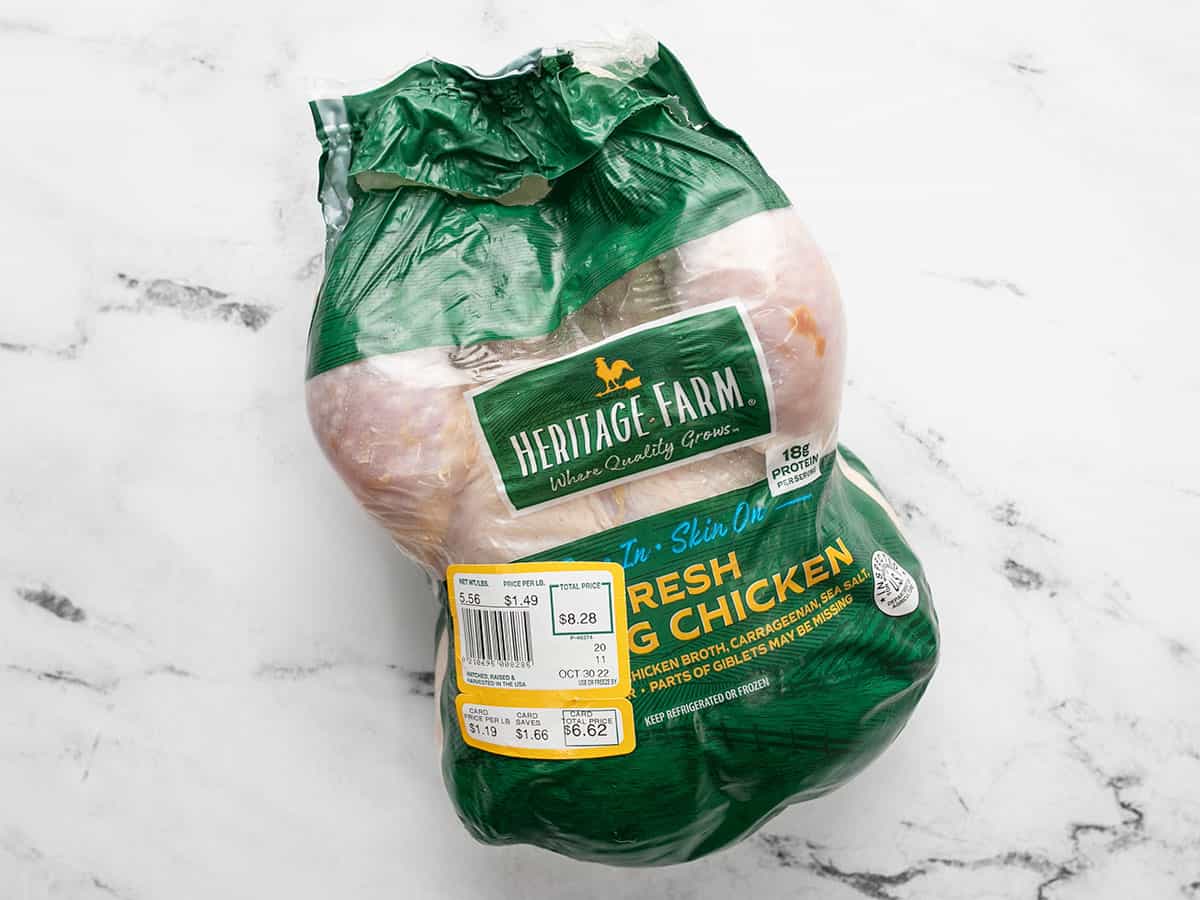
Place a rack in the center of your oven and preheat it to 425°F. Remove the chicken from its packaging.
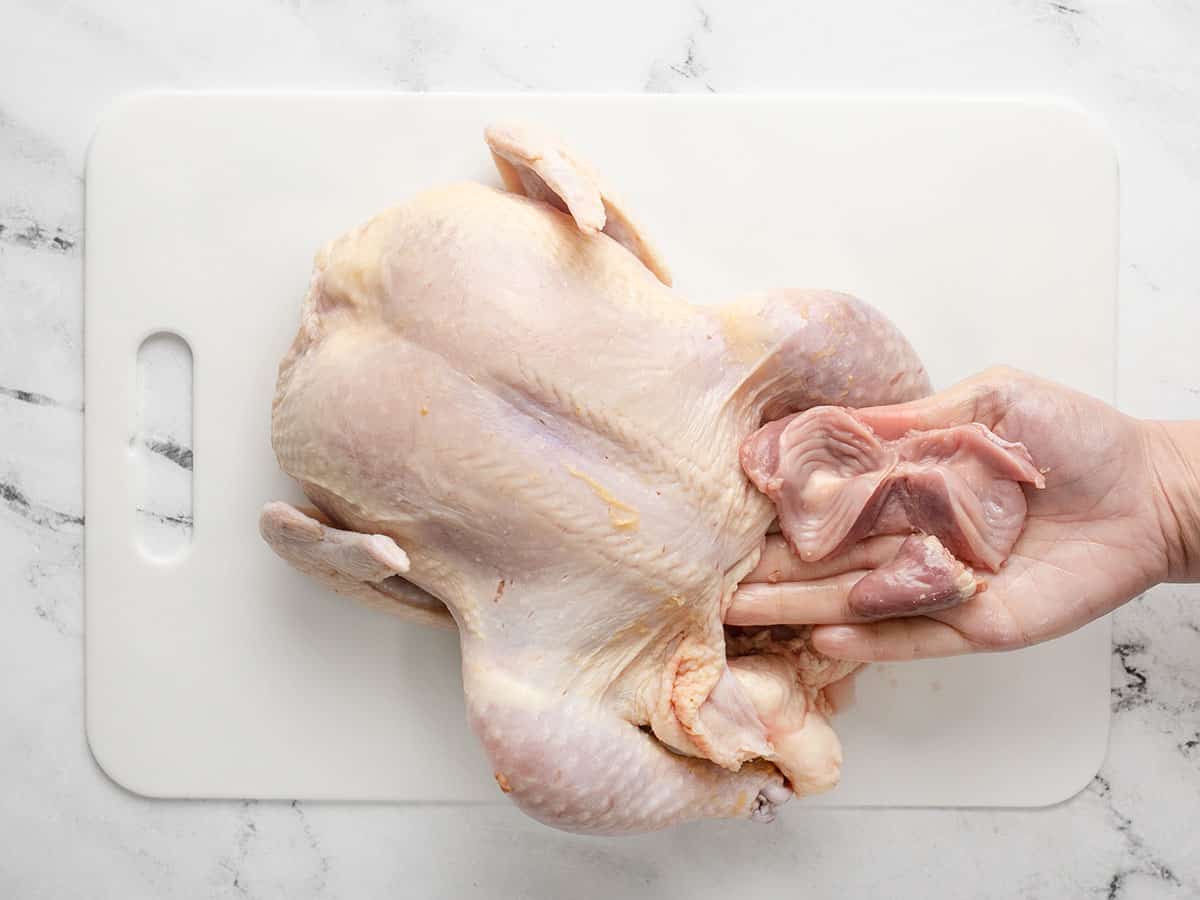
Remove the innards. Reserve them for chicken stock.
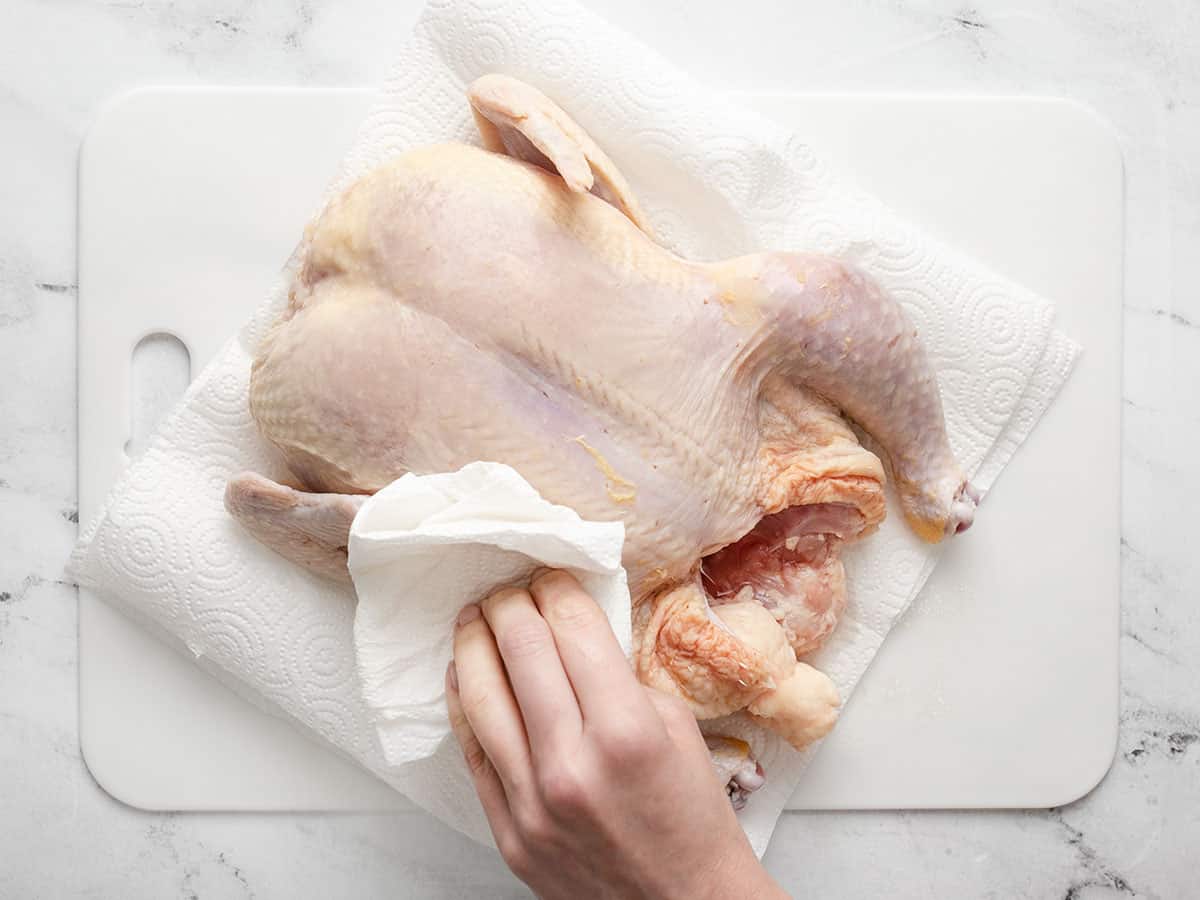
Dry the chicken thoroughly inside and out with paper towels.
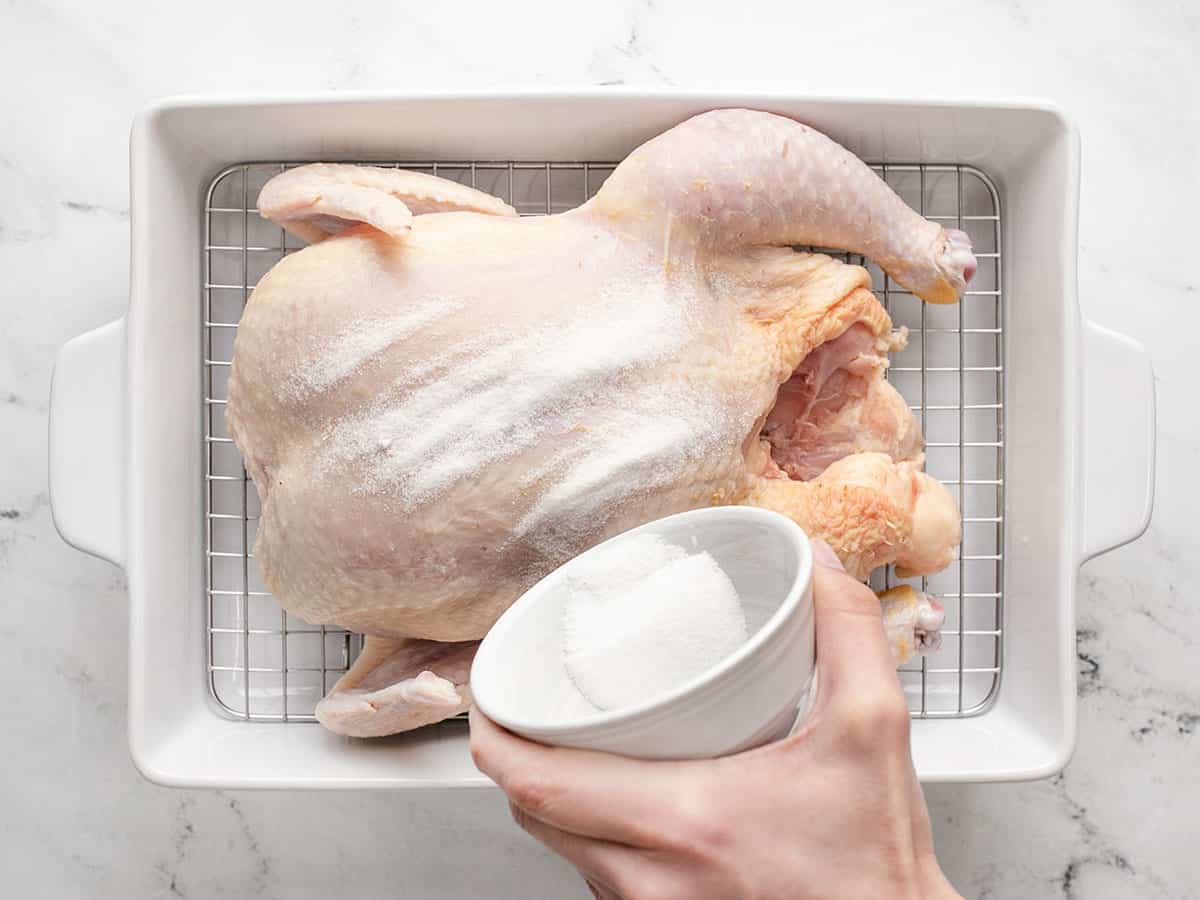
Dry brine the chicken by rubbing salt on it, inside and out. Use 1 teaspoon of kosher salt or coarse sea salt per pound of meat. Or 1/2 teaspoon of fine sea salt or iodized salt per pound of meat. Let it rest uncovered in your fridge for at least an hour but preferably overnight.
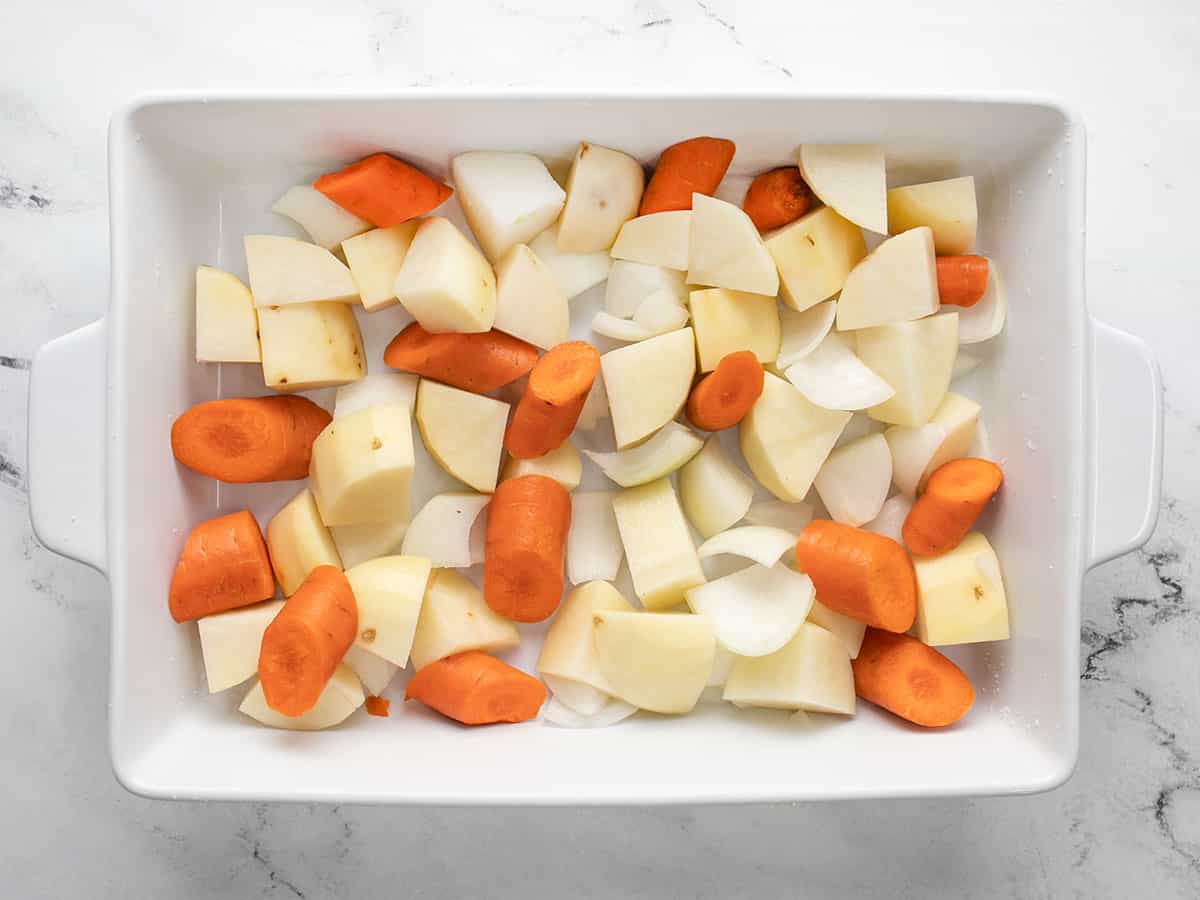
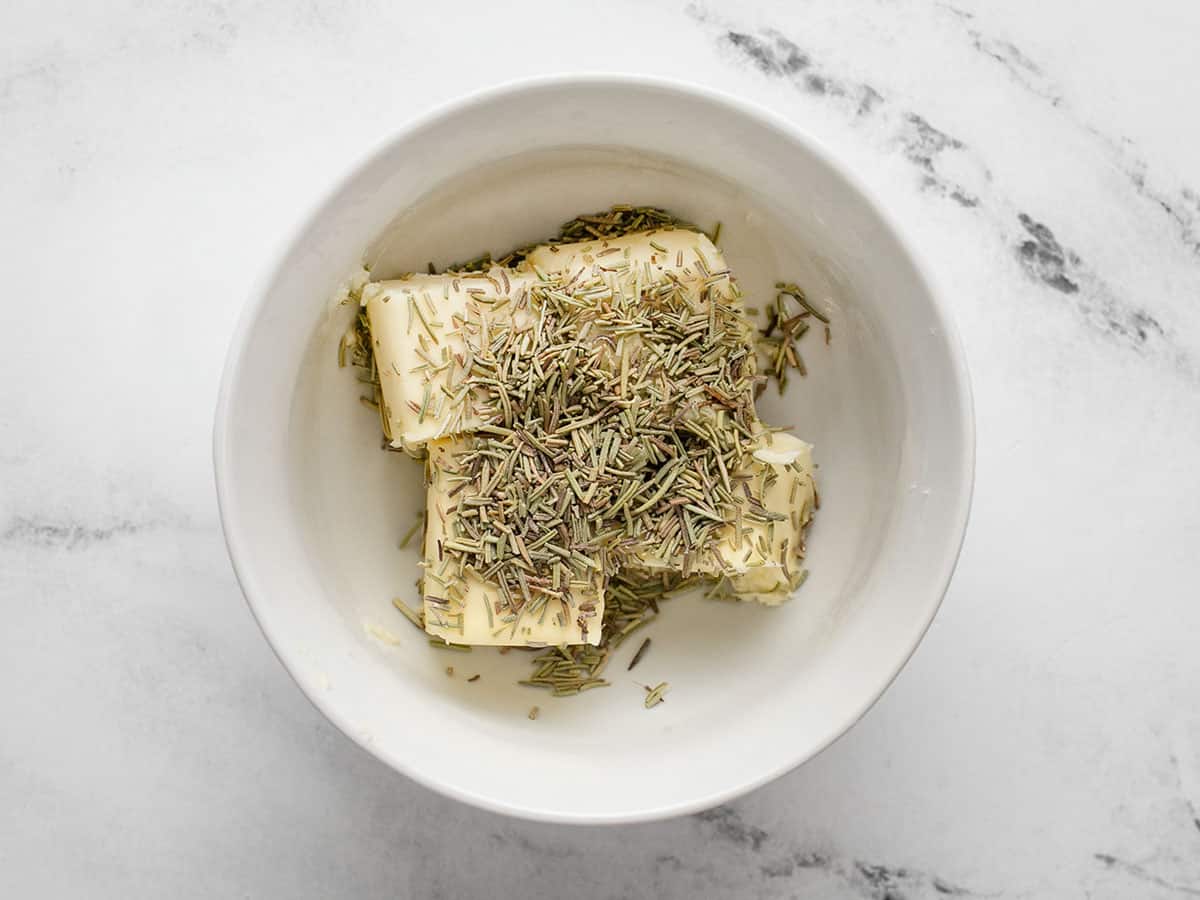
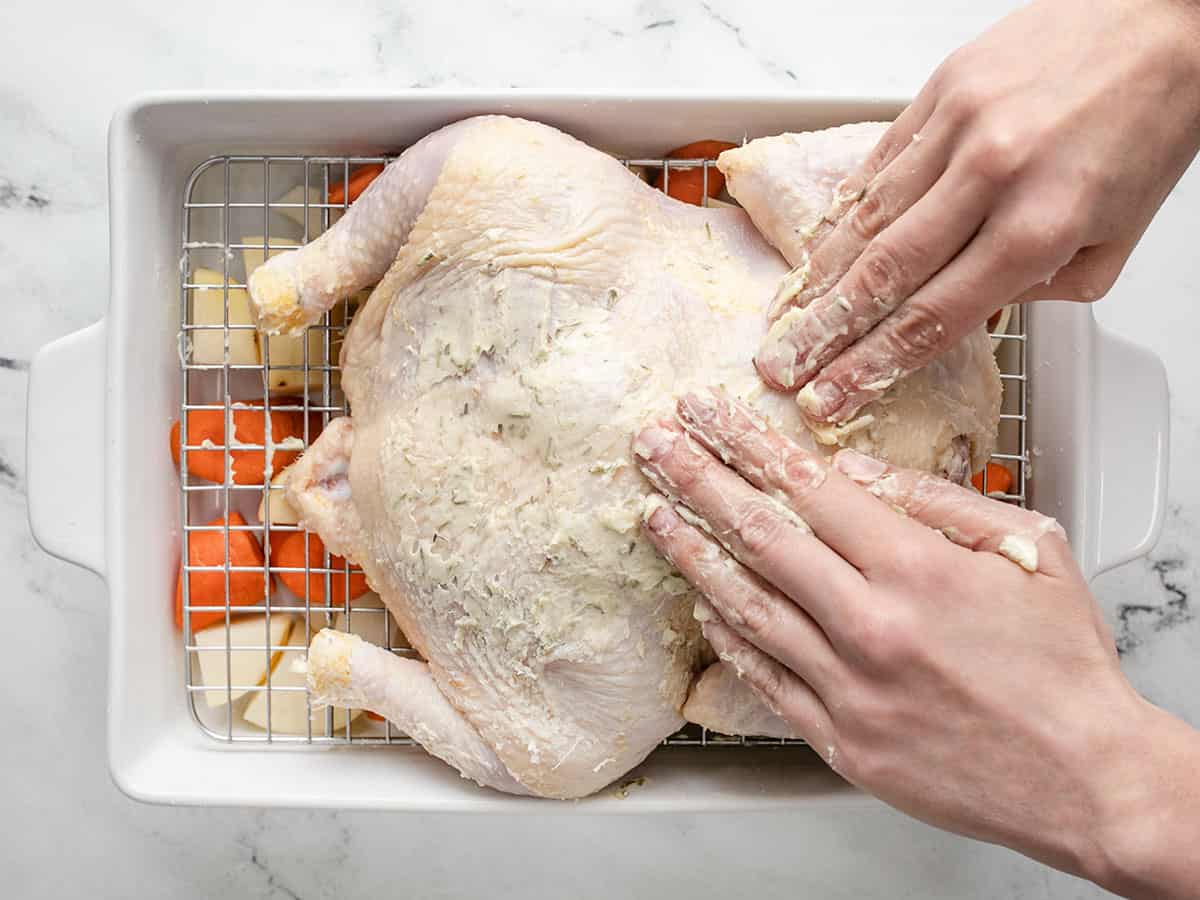
Place the chicken on a rack over the vegetables and pat it dry again. Cover the chicken inside and out with butter. Work your way under the skin on the breast and add butter there too.

Quarter a lemon and slice through the equator of a bulb of garlic.
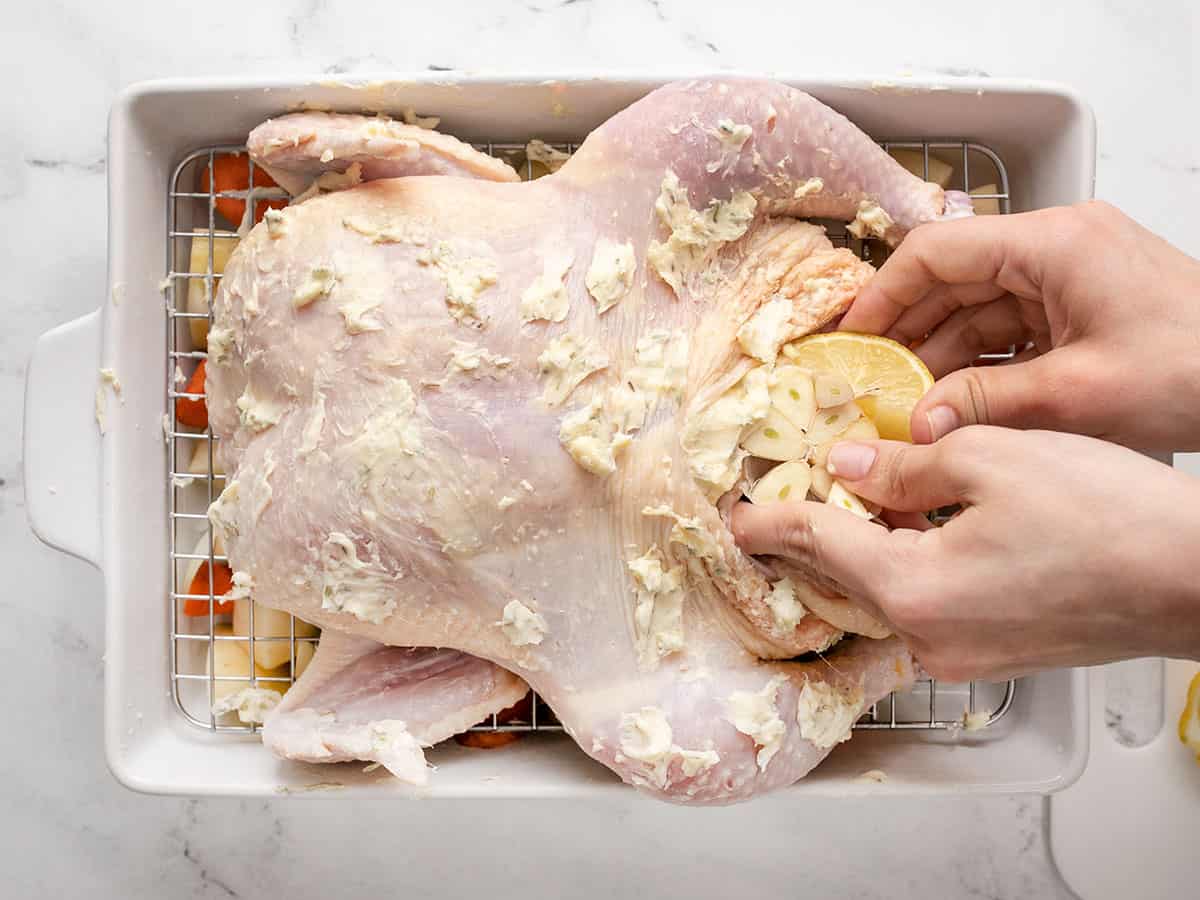
Add the garlic and the lemon into the cavity of the chicken.
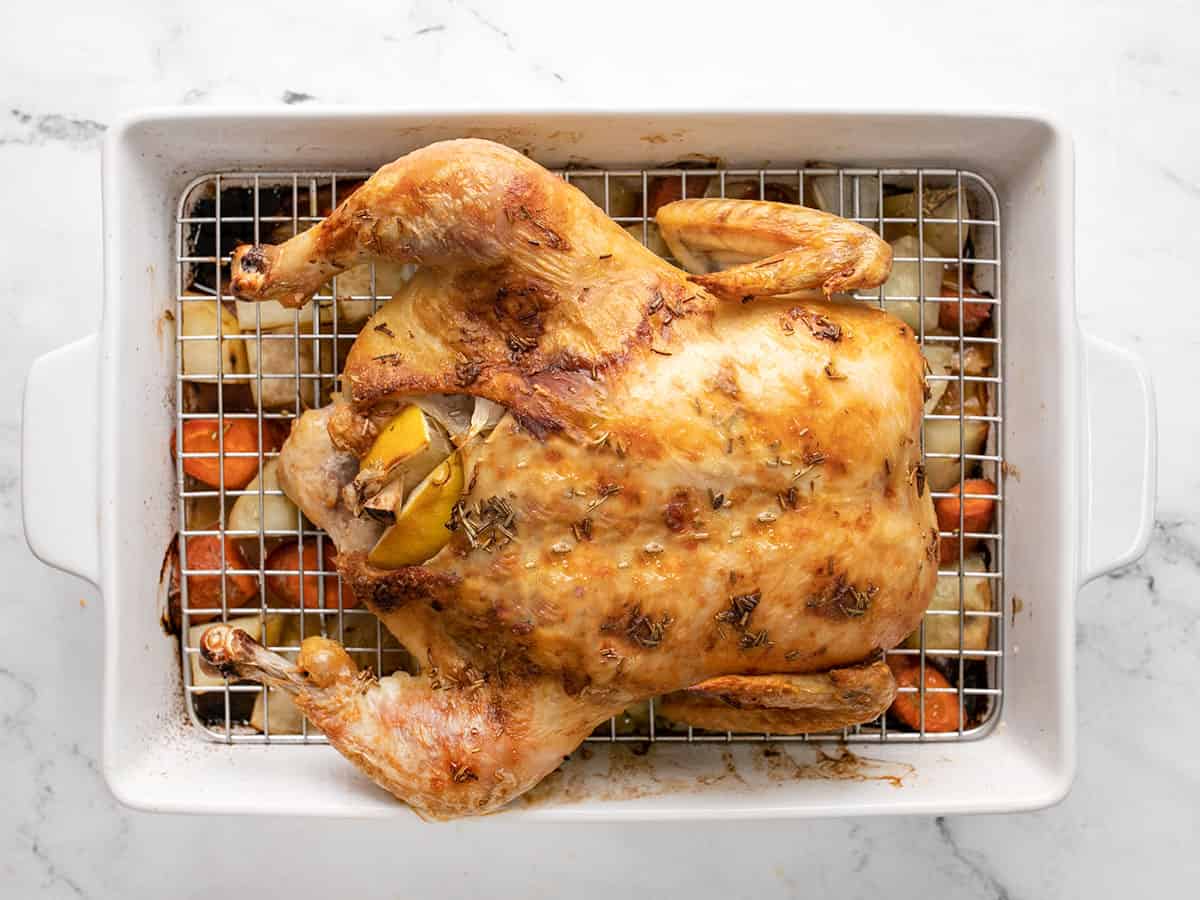
Roast your chicken at 425°F until a meat thermometer inserted into the breast reads 160°F and inserted into the thigh it reads 170°F. Remove the chicken from the pan and place it on a serving platter. Let it rest for at least ten minutes before carving it.
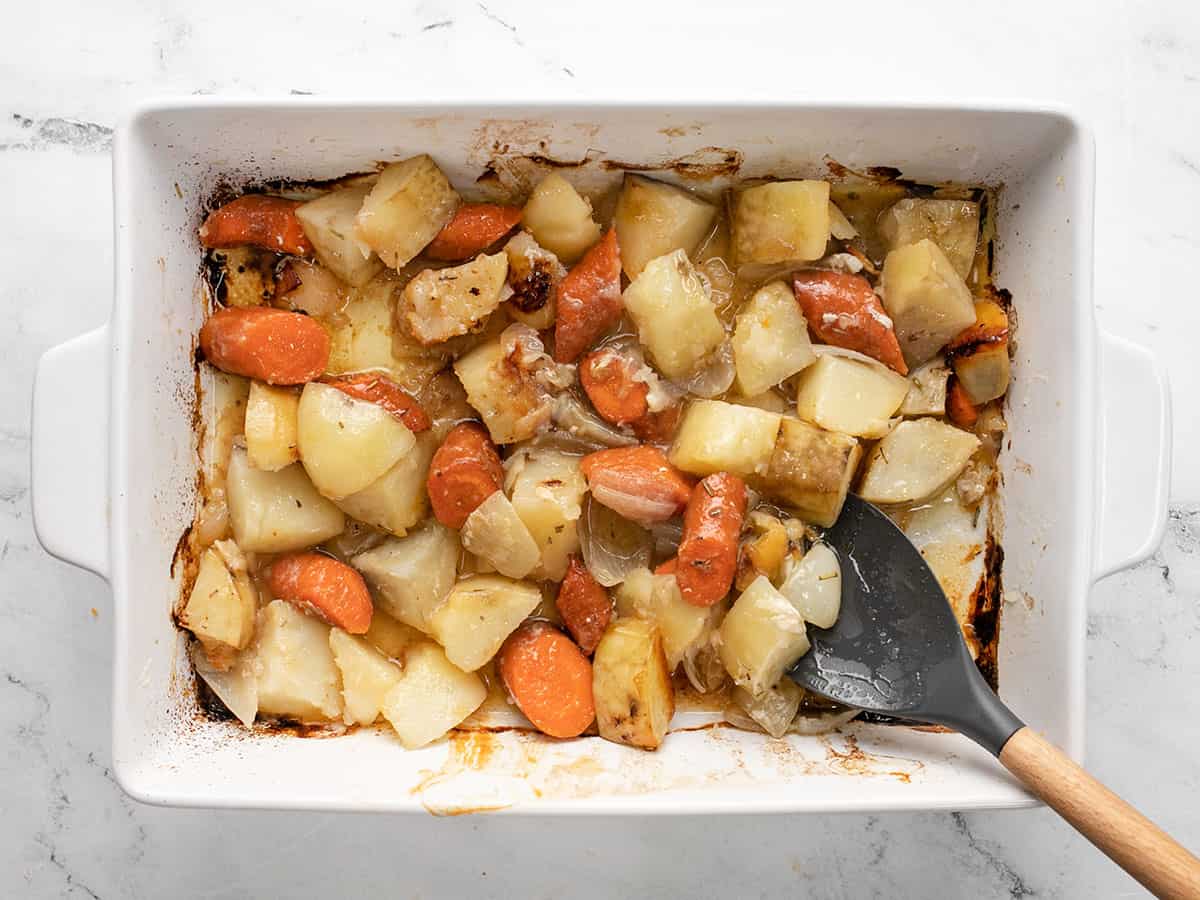
Stir the vegetables in the bottom of the pan to cover them with the chicken jus.
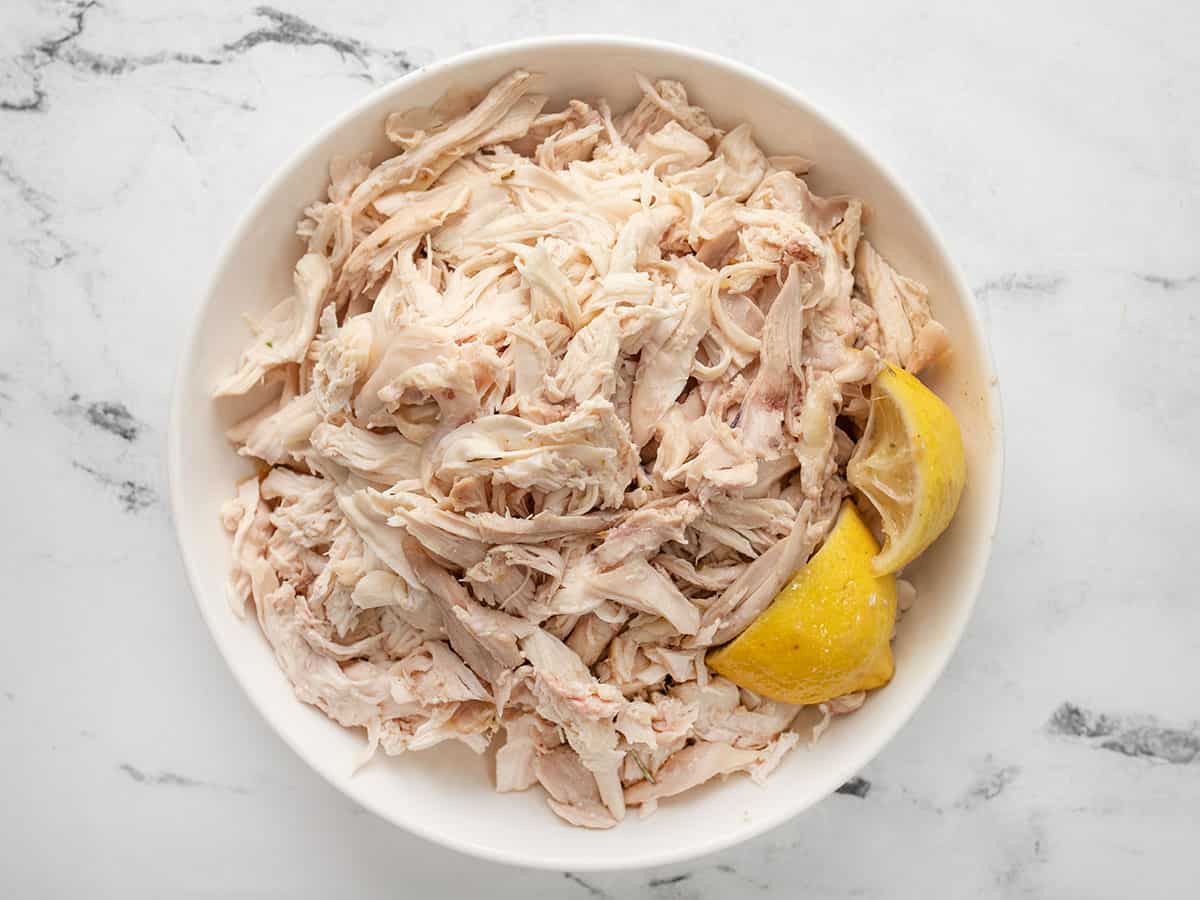
Pull any leftover meat off the bones and store it in an air-tight container. Reserve the bones for chicken stock. Simply add them to a freezer-safe container and freeze them until you are ready to use them. Use the pulled chicken for other recipes.
